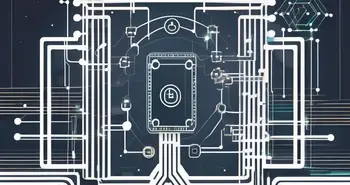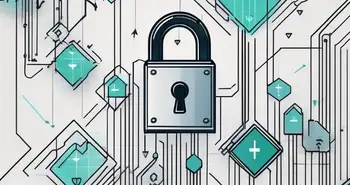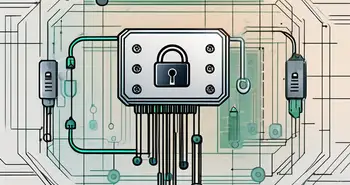What Is a Blockchain Bridge and How Does It Work

In recent years, blockchain technology has revolutionized industries and paved the way for new possibilities. Its decentralized nature and ability to provide immutable records have made it a game-changer in various sectors. However, one of the primary challenges in the blockchain ecosystem is the lack of interoperability and communication between different blockchains. This is where blockchain bridges come into play.
Understanding Blockchain Technology
Before delving into the intricacies of blockchain bridges, it's important to have a basic understanding of blockchain technology. In simple terms, a blockchain is a distributed digital ledger that records transactions across multiple computers. Each transaction block is linked using cryptography, creating a chain of blocks. This makes it nearly impossible to tamper with or alter data stored on a blockchain.
The Basics of Blockchain
A blockchain consists of several elements, including transactions, blocks, and nodes. Transactions are the building blocks of a blockchain and represent the exchange of value or information. These transactions are bundled together into blocks, which are then added to the chain. Nodes, which can be individuals or organizations, participate in validating and securing transactions on the blockchain.
Key Features of Blockchain Technology
Blockchain technology offers several unique features that contribute to its widespread adoption. Immutability, transparency, and decentralization are three key features that set blockchain apart from traditional systems. Immutability ensures that once a transaction is recorded on the blockchain, it cannot be altered or deleted. Transparency allows anyone to view the transaction history, promoting accountability. Decentralization eliminates the need for a central authority, enhancing security and reducing the risk of single points of failure.
Defining a Blockchain Bridge
Now that we have a solid understanding of blockchain technology, let's dive into the concept of a blockchain bridge. A blockchain bridge is a technology that enables communication and interoperability between different blockchains. It acts as a connector or mediator, allowing assets or information to be transferred seamlessly between blockchains that would otherwise be isolated from each other.
The Concept of Blockchain Bridge
The concept of a blockchain bridge is analogous to a physical bridge that connects two separate pieces of land. Similarly, a blockchain bridge creates a connection between two or more blockchains, enabling the transfer of assets or data across different networks. This opens up a world of possibilities, as it allows users to leverage the strengths of multiple blockchains and tap into their respective ecosystems.
Importance of Blockchain Bridges
Blockchain bridges play a crucial role in overcoming the lack of interoperability in the blockchain space. They enable seamless communication and collaboration between different blockchains, fostering innovation, and expanding the possibilities of blockchain technology. With blockchain bridges, users can access decentralized applications (dApps) and utilize assets from various blockchains, irrespective of their underlying protocols.
The Mechanics of a Blockchain Bridge
Now that we understand the concept and importance of blockchain bridges, let's explore how they actually work. Blockchain bridges employ various mechanisms to facilitate interoperability and asset transfer between blockchains.
How Blockchain Bridges Connect Different Blockchains
At the heart of a blockchain bridge is a protocol that facilitates communication between blockchains. This protocol typically involves a network of validators or nodes that verify and confirm transactions between the connected blockchains. These nodes play a crucial role in ensuring the integrity and security of the bridges. They validate transactions and ensure that assets are transferred accurately and securely across the connected blockchains.
The Role of Smart Contracts in Blockchain Bridges
Smart contracts, which are self-executing contracts with predefined conditions, are often utilized in blockchain bridges. These contracts automate the validation and execution of transactions between blockchains. By leveraging the scripting capabilities of smart contracts, blockchain bridges can ensure trustless asset transfer while incorporating complex conditions or logic.
Benefits of Using Blockchain Bridges
Blockchain bridges offer several benefits that contribute to the growth and adoption of blockchain technology.
Interoperability and Blockchain Bridges
One of the primary benefits of blockchain bridges is the enhanced interoperability between blockchains. By enabling seamless communication and asset transfer, blockchain bridges break down the barriers of protocol silos. This opens up new opportunities for collaboration, innovation, and cross-chain utilization of assets.
Enhancing Blockchain Efficiency with Bridges
Blockchain bridges also have the potential to enhance the efficiency and scalability of blockchain networks. By connecting multiple blockchains, the workload can be distributed, and the overall network capacity can be increased. This can help alleviate congestion issues and improve transaction speeds, making blockchain technology more practical for a wide range of applications.
Potential Challenges and Solutions
While blockchain bridges offer numerous benefits, there are also potential challenges that need to be addressed to ensure their successful implementation.
Common Issues with Blockchain Bridges
One common challenge with blockchain bridges is the issue of trust. Since blockchain bridges involve the transfer of assets between different blockchains, there is a need for trust in the underlying technology and the security of the bridge. Additionally, ensuring the proper identification and verification of assets being transferred across blockchains poses a challenge.
Overcoming Challenges in Blockchain Bridge Implementation
Efforts are underway to address these challenges and make blockchain bridges more robust and secure. Improving the validation mechanisms, enhancing the transparency of bridge operations, and implementing strict security protocols are some of the solutions being explored. As the blockchain ecosystem continues to evolve, we can expect more innovation and advancements in the field of blockchain bridges.
Frequently Asked Questions
1. What is a blockchain bridge?
A blockchain bridge is a technology that enables communication and interoperability between different blockchains.
2. How do blockchain bridges work?
Blockchain bridges work by utilizing protocols and validators to facilitate the transfer of assets or data between connected blockchains.
3. What are the benefits of using blockchain bridges?
Blockchain bridges offer enhanced interoperability, enabling collaboration and the utilization of assets across different blockchains. They also have the potential to improve efficiency and scalability in blockchain networks.
4. What challenges do blockchain bridges face?
Trust, security, and asset identification are some of the challenges that need to be addressed when implementing blockchain bridges.
In conclusion, blockchain bridges are a vital component of the blockchain ecosystem, enabling seamless communication and interoperability between different blockchains. They open up new possibilities for collaboration, innovation, and asset utilization. While challenges exist, ongoing developments and improvements in blockchain bridge technology are paving the way for a more interconnected and robust blockchain landscape. As an expert in blockchain technology, I encourage organizations and individuals to explore the potential of blockchain bridges and embrace the opportunities they offer. By leveraging the power of blockchain bridges, we can unlock the full potential of blockchain technology and revolutionize various industries in the process.
As you consider the transformative potential of blockchain bridges in enhancing interoperability and unlocking new possibilities, Morpher invites you to experience the future of trading on a platform that embodies the innovation of blockchain technology. With Morpher, you can trade a variety of asset classes, from cryptocurrencies to unique markets, all with zero fees, infinite liquidity, and the safety of a non-custodial wallet. Embrace the opportunity to trade with fractional investing, benefit from short selling without interest fees, and amplify your trades with up to 10x leverage. Join a trading revolution that's as interconnected and robust as the blockchain bridges we've discussed. Sign Up and Get Your Free Sign Up Bonus today, and be part of a community that's reshaping the world of investing.

Disclaimer: All investments involve risk, and the past performance of a security, industry, sector, market, financial product, trading strategy, or individual’s trading does not guarantee future results or returns. Investors are fully responsible for any investment decisions they make. Such decisions should be based solely on an evaluation of their financial circumstances, investment objectives, risk tolerance, and liquidity needs. This post does not constitute investment advice.

Painless trading for everyone
Hundreds of markets all in one place - Apple, Bitcoin, Gold, Watches, NFTs, Sneakers and so much more.

Painless trading for everyone
Hundreds of markets all in one place - Apple, Bitcoin, Gold, Watches, NFTs, Sneakers and so much more.








